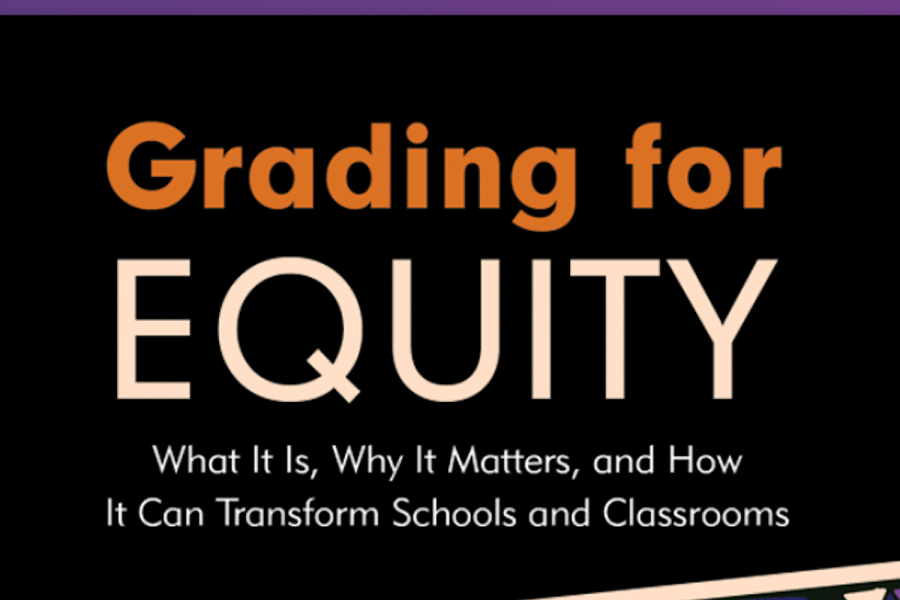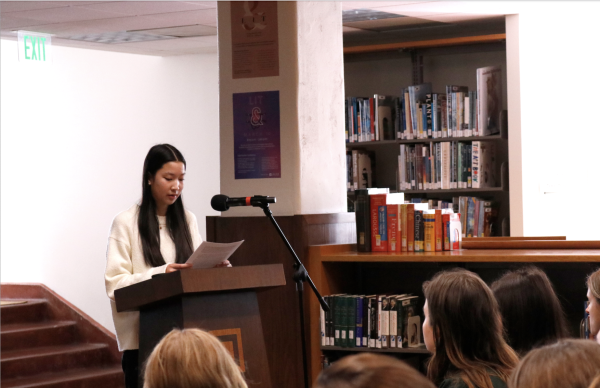Grading for equity: Faculty, students reflect on summer reading
Photo credit: Promotional poster
Joe Feldman wrote Grading for Equity: What It Is, Why It Matters, and How It Can Transform Schools and Classrooms in 2018 in response to the inconsistent grading amongst educators and its implications on student performance. Every summer, the Archer faculty read a book relevant to their professional development both as teachers and learners. “The easiest thing to do is fail students or give them A’s,” Assistant Head of School Karen Pavliscak said. “It’s the nuances in between.”
October 4, 2021
Every year Archer provides the faculty with a book to read over the summer that supports their professional development. Last year, the entire faculty read “Culturally Responsive Teaching and The Brain: Promoting Authentic Engagement and Rigor Among Culturally and Linguistically Diverse Students,” by Zaretta Hammond.
This year, however, the faculty was given a list of books and was told to pick one to read that best relates to their teaching style. “Grading for Equity,” by Joe Feldman was the most popular read this summer, with several round table talk discussions during August Institute, a faculty development event, and an even deeper exploration during the most recent faculty professional development day on Sept. 17.
“Grading for Equity: What It Is, Why It Matters, and How It Can Transform Schools and Classrooms helps us see why grading is an integral part of an equity agenda. Joe shows us how we can use grading to help students become the leaders of their own learning and lift the veil on how to succeed,” Hammond wrote in a review on the Grading for Equity website. “He reminds us that authentic assessment and transparent grading are essential parts of a culturally responsive classroom. This must-have book will help teachers learn to implement improved, equity-focused grading for impact.”
While the school has not implemented any new grading policies, many teachers and departments are looking into the elements of learning that correspond to their classroom and subject.
“One of the things that the books talked about was the difference between taking the average of the scores versus dropping the lowest score or only taking the highest. I think one of the things that’s hard to tease out there with history is that each time students practices a skill, if they are doing it in different units, then they are doing it with different content,” history teacher Kathleen Niles said. “The skills are not being exercised purely on its own and given that, if we just dropped the lowest score, does that accurately represent the student’s knowledge and understanding? Is it possible to cleanly tease out the skills and the content?”
How are we meeting the needs of all of the learners in the classroom?
— Karen Pavliscak
Assistant Head of School Karen Pavliscak echoed this sentiment, stating that there are three main questions that she and the rest of the faculty are considering.
“Why do we grade? How do grades authentically represent student learning? What is the role of assessment and how does it support meaningful learning?” Pavliscak said.
Pavliscak continued, noting that the faculty are going beyond the surface of grading and are interested in the “nauces in between.”
“When you get into the weeds, we are looking at the students’ needs, how we can support their learning and how we can implement grading policies that match their developmental age,” Pavliscak said.
Although the faculty review of grading policies and practices from an equity lens is ongoing and will be at least a formal year-long process, some students report that they are already experiencing the benefits of these conversations.
“One of my teachers explained to me that the kids who weren’t necessarily understanding the concepts, but were doing the homework, had this fluff in their grade that allowed them to score poorly on tests and quizzes. But the kids who potentially had to watch their siblings after school, go to work, et cetera were not consistently turning in their homework, but then scoring extremely well on tests because they understood the concepts, yet their grades still suffered,” senior Marley Mills said.
Mills continued, stating that the example conveyed to her is a reality for many people at Archer with responsibilities and stressors external from their identity as a student.
“I think that the book the faculty read over the summer is powering important conversations on how DEI [diversity, equity and inclusion] manifests in the grading system,” Mills said. “I hope that more teachers adopt this mindset and practice because at the end of the day it just gives everyone a chance.”





![Freshman Milan Earl and sophomore Lucy Kaplan sit with their grandparents at Archer’s annual Grandparents and Special Friends Day Friday, March 15. The event took place over three 75-minute sessions. “[I hope my grandparents] gain an understanding about what I do, Kaplan said, because I know they ask a lot of questions and can sort of see what I do in school and what the experience is like to be here.](https://archeroracle.org/wp-content/uploads/2024/03/grandparents-day-option-2-1200x800.jpg)
























































![Freshman Milan Earl and sophomore Lucy Kaplan sit with their grandparents at Archer’s annual Grandparents and Special Friends Day Friday, March 15. The event took place over three 75-minute sessions. “[I hope my grandparents] gain an understanding about what I do, Kaplan said, because I know they ask a lot of questions and can sort of see what I do in school and what the experience is like to be here.](https://archeroracle.org/wp-content/uploads/2024/03/grandparents-day-option-2-600x400.jpg)




